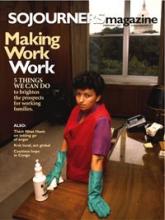The problem with a disease defined by an extraordinary number of dead, infected, and orphaned is that it is all too easy to lose sight of the individual. HIV/AIDS is most often spoken of in millions, but the makers of the documentary A Closer Walk wanted to show people, one at a time, who were infected and affected by HIV/AIDS.
And so filmmaker Robert Bilheimer introduces us to a child, ironically named Lucky, languishing in a hospital ward; a clergyman named Gideon with HIV/AIDS ministering to others who have the disease; a Russian IV drug user named Ruslan; a widow named Octavia who discovers her husband has died of AIDS; and a whimsical farmer in Kansas by the name of Roger. Beautifully photographed and artfully edited, the film simply lets us know these people—who they are, where they live, and who loves them. It is a deceptively simple technique to introduce an often overwhelmingly complex issue.
Woven into their stories are reflections by AIDS activists such as Bono, as well as doctors, researchers, and philanthropists, all attempting to make sense of the modern-day plague that is reshaping our world. Testimonials by the Dalai Lama and Kofi Annan are mixed with the observations of a Kansas mayor and other less-famous individuals, reminding us that everyone has a role to play. Narrated by actors Glenn Close and Will Smith, the film presents both the faces and the facts of the AIDS crisis in understandable terms.
The camera records the horror of a funeral, the tears of a professional, the feeble attempts of a sick child to smile and give a “thumbs up.” It shows AIDS in all its tragedy, person by person. It follows some individuals long enough that we grow fond of them, such as a young Ugandan orphan named Olivia who tells the story of caring for her mother as she died of AIDS.
Read the Full Article
